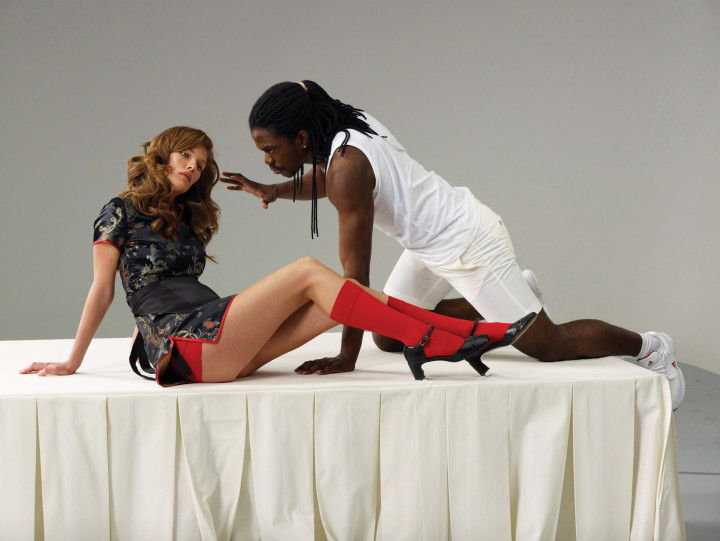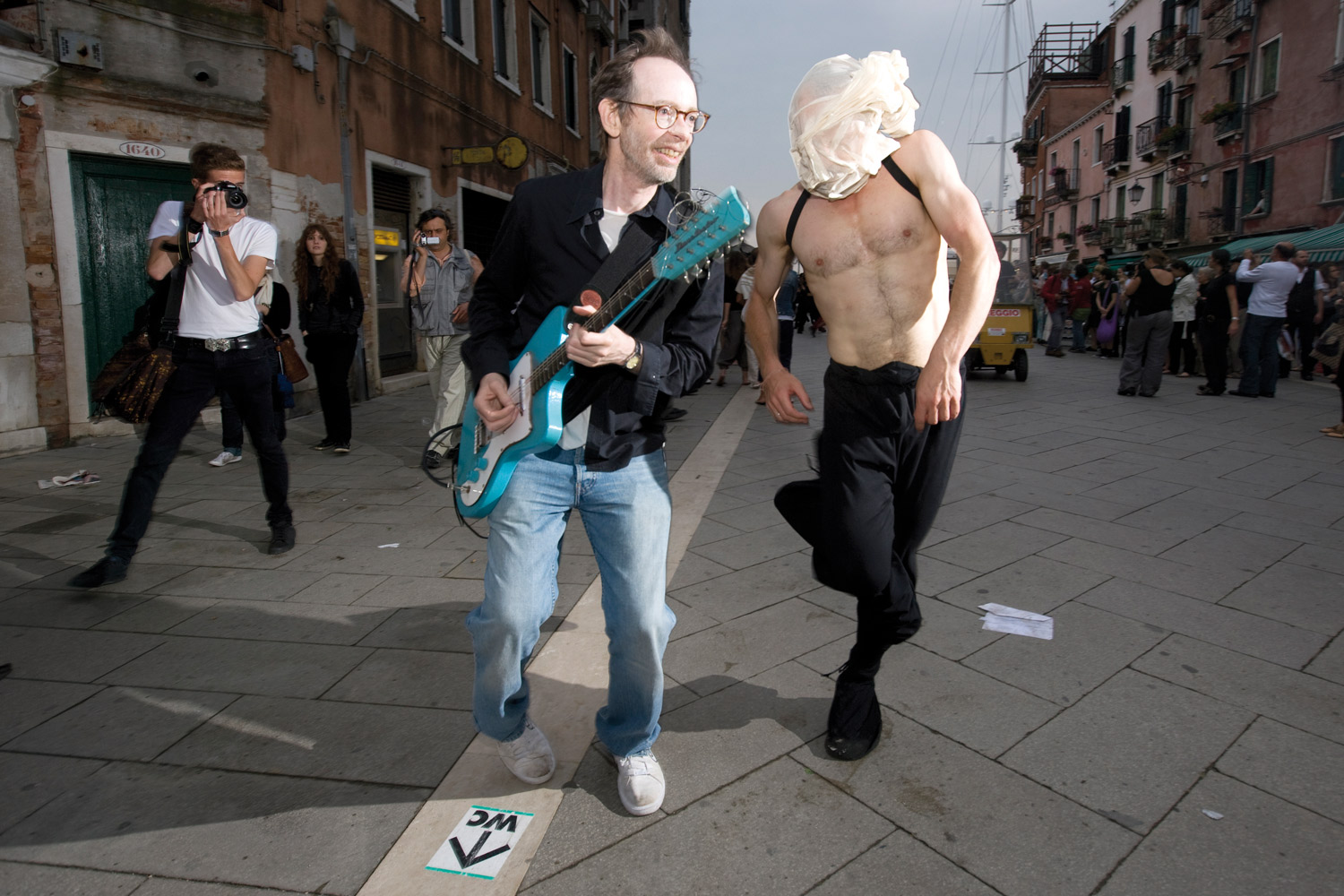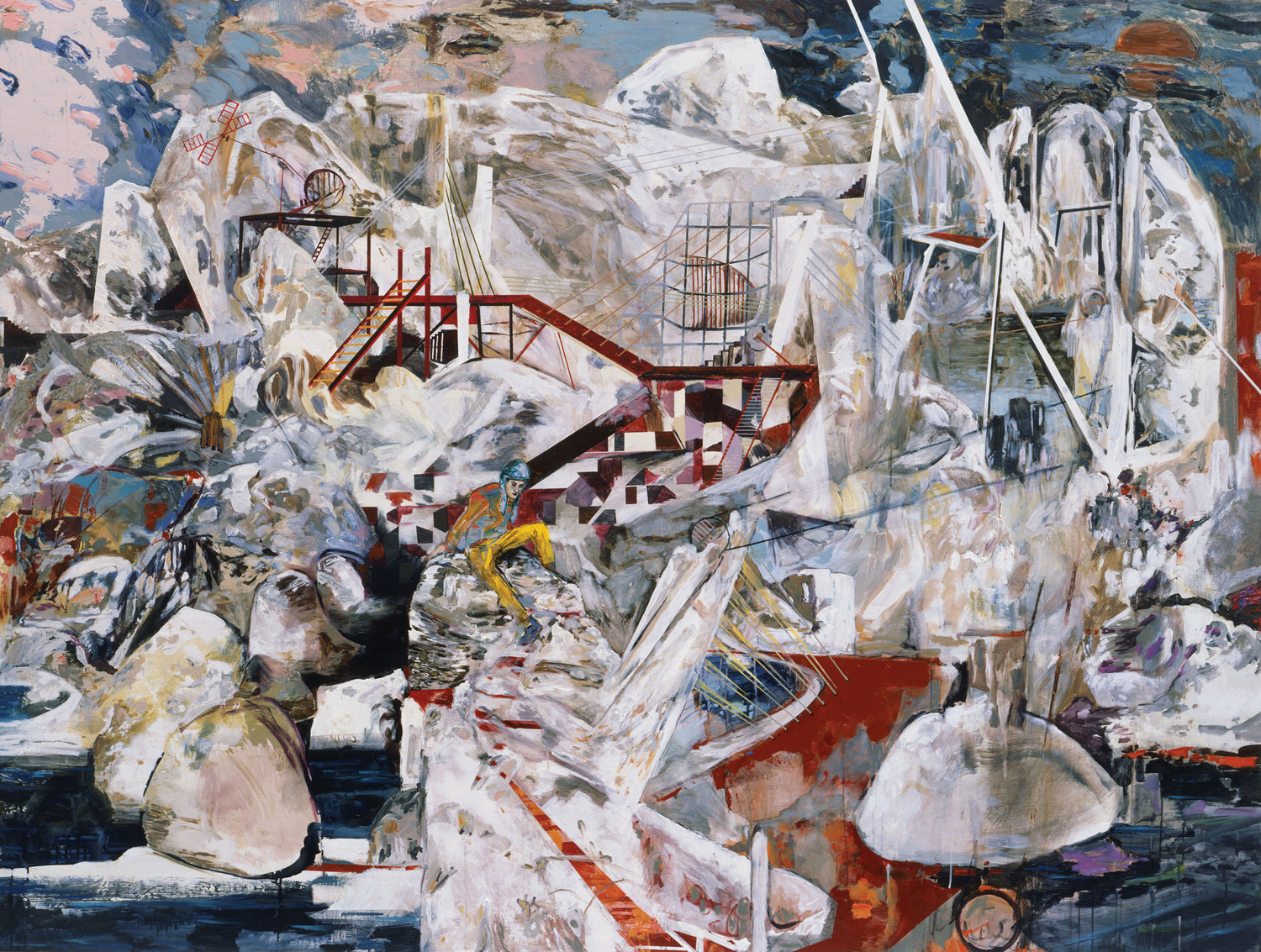
In 1969 Federico Fellini had the premier of Fellini-Satyricon, a polemical film based on the homonymous text by the poet Petronio Arbitro in which the central part of the piece is the reconstruction of the extravagant feast offered by Trimalchio — a slave converted to a new rich man — in an orgiastic atmosphere, decadent and amoral, that in Arbitro’s time was perceived as a metaphor for the contemporary oligarchies. Forty years after Fellini’s masterpiece, AES+F offers a new version in the context of the show entitled “Unconditional Love” in the Arsenale Novissimo in Venice.
The subject of a feast is suitable for an exuberant mise-en-scène, and AES+F does not disappoint. Their film installation The Feast of Trimalchio (2009) is indulgent and technologically impeccable.
The dystopic Arcady in which the feast takes place is an amalgam of oriental and neoclassical architecture digitally recreated and traversed by a series of characters that relate to one another polyphonically; their poses emulate iconographical archetypes of Mannerist paintings and their frozen and distant gestures mimic haute couture.
These figures characterize a new oligarchy that continues to pursue the realization of their extravagant pleasures, set against their equilibrated diet, cholesterol-free foods and Japanese seaweeds, their relaxation in the sauna and lengthy workouts in the gym…
The luxurious hotel of AES+F’s The Feast of Trimalchio is similar to that of the mountain which appeared in their last video installation, Last Riot (2005–2007), presented at the 52nd Venice Biennale: a world suspended in time, where, as AES+F argues, “the end of ideology, history and ethics is celebrated […].” Last Riot’s main characters are young warriors without ideology, who fight for the pleasure of fighting; Trimalchio’s guests are professional hedonists in search of “pleasure without conditions.”
The ambiguous ideological background of AES+F and the ability with which the collective traverses the frontier between narcissism and political incorrectness is always intriguing. In this video installation there isn’t any element that doesn’t carry with it, in a direct or indirect manner, an underlying threat. Just as in all neo-baroque creations, AES+F’s work is nurtured from moral and cultural paradoxes: seduction and threat; hyperrealism and artificiality; classicism and contemporaneity; spirituality and sensuality; historicism and the end of history.
The result is a controlled chord of effects that exerts a hypnotic appeal upon the spectator, leaving them psychologically exposed. AES+F plays with our obsessions, and the suggestive and slow movement of the scenes functions like the gaze of a voyeur who spies on the relations of seduction and power established between the characters.
However, AES+F does not conclude the narrative; there is no final scene. The outcome remains as an open question that will disturb the spectator, inasmuch that only he can give an answer. No, The Feast of Trimalchio does not take place in Villa Certosa, but having faced AES+F’s shocking video installation, what really perturbs us is the intuition that, sometimes, reality exceeds fiction.





